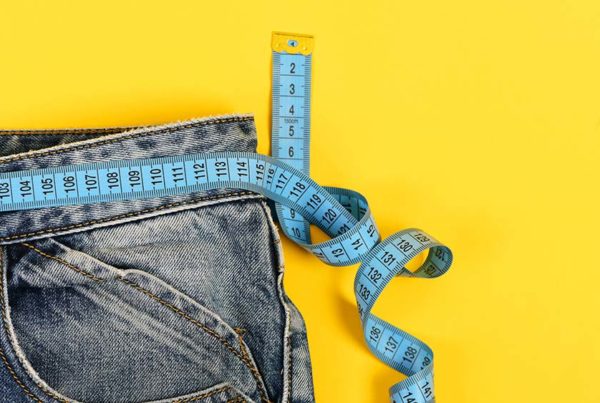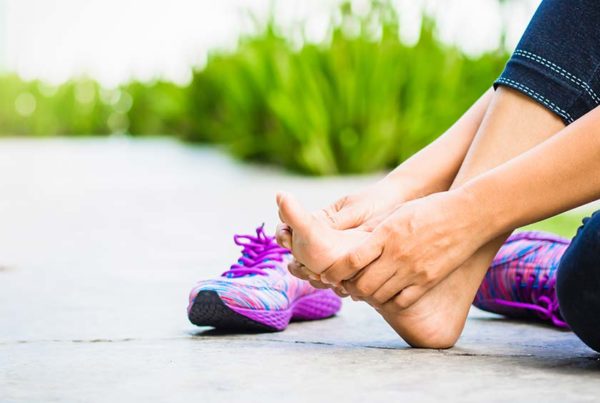
It’s more than immunity and hormones, posture and gait play key roles too.
The ageless Hall of Fame baseball pitcher Satchel Paige said it best: “How old would you be if you didn’t know how old you were?” Too many people would say they feel or look older than they are. If that is the case, change it!
We can all update our age, and always strive to be younger. While we know that most debilitating chronic illnesses are preventable, including heart disease, cancer and Alzheimer’s, so is poor aging. Large numbers of today’s elderly are living longer through heroic measures such as heart, lung and liver transplants, around the clock care and other medical means. For most, those ‘extra years’ come at the end of the lifespan, unfortunately, when life is less vigorous and productive. But we can significantly control what may be the most important factor of aging—quality of life. And the sooner we start the better.
All humans do it. The months and years pass and we get less efficient with our bodies and brains. We slow down, and it happens whether we are couch potatoes or Olympians. There is no stopping it—anti-aging is a myth. We can, however, significantly control the pace at which aging occurs by being healthier and more fit. The difference is physiological versus chronological aging.
A normal, healthy life includes aging. And while some illness and death may come from factors beyond our control, most unhealthy conditions that slow people down, or kill them at too early an age, are avoidable. This means we control aging to a great degree by choosing a lifestyle that allows us to be more like an average 40-year old even if we were born 50 years earlier, or a 45-year old even though our driver’s license says 1953.
Chronological age refers to the years that have passed. But when we are healthier and more fit, we function like someone younger. That is our physiological age. It’s related to better blood sugar regulation, brainpower, endurance and strength, and other lifestyle features we influence. This also includes our posture, gait and how we physically move.
While the whole body plays a role in graceful aging, three areas in particular do much of the work: the brain and neuromuscular mechanism, hormones, and the immune system. These areas of the body are continuously repairing and replacing themselves, relying on raw materials from the foods we eat. Adelle Davis’ 1950s mantra, “you are what you eat” still holds true today.
These and other aging factors are so integrated into our whole body that it is difficult to discuss each one in isolation. For example, hormones are an essential part of immunity, and muscle function reflects physical, chemical and mental health. In particular, one of the most common images of aging—posture and gait—is also a sign of how well we are doing it.
The Bent Spine Syndrome
Among the most common images of poor aging are people who do not stand erect. On closer examination, they don’t sit or move that way either, especially when walking. Their lower (lumbar) spine is flexed, and they are “bent” forward having lost their natural spinal curve, which usually helps maintain a healthy-looking upright posture. With a “bent” spine, individuals become shorter. While this typically occurs in the elderly, younger people can begin developing it too. This condition is well recognized by clinicians and researchers, and is called the bent spine syndrome, BSS, originally referred to as camptocormia, derived from the Greek camptos (bent) and kormos (trunk). (See “Camptocormia: the bent spine syndrome, an update.” European Spine Journal. 2010 Aug;19(8):1229-37.)
The BSS is a spectrum disorder, going from mild and moderate to a more severe condition depending on a person’s level of health. Two common causes of BSS include muscle imbalances, often a reflection of various neurological and biochemical problems, and psychological disorders.
The BSS affects the whole body, not just the spine. An example is how proper spinal function can help balance a key component of the body, the autonomic nervous system, which regulates many aspects of health from blood pressure, heart beat and breathing, to gut function, sexual arousal and controlling all stress.
As a functional problem for most individuals, BSS is rarely due to permanent changes in the bones or discs of the spinal column. This is evident when lying down—in this relaxed position people with BSS have relatively straight spines.
In addition, BSS may or may not be associated with pain, but the posture and gait are typically irregular, with related body-wide function that can be significantly reduced. The result is poor aging.
Physical and Chemical Causes
There are a number of physical causes of BSS, perhaps the most common one being muscle imbalance (muscles directly control the skeleton, especially the spine). In most cases, these imbalances are due to some type of neurological dysfunction between the brain and muscle. These weaknesses are not only in muscles directly controlling the spine, but throughout the body too, including those in the feet, pelvis, abdomen, and neck—areas that can significantly affect spinal posture and movement.
Another aspect of muscle dysfunction is reduced energy due to chemical imbalance. Muscle fatigue develops quickly in those with BSS during standing, walking, and even easy physical activities. This is typically due to poor aerobic metabolism.
Other biochemical factors include abnormally high levels of fat found in the muscles of those with BSS. The cause of this may be of hormonal, primarily high insulin due to the ingestion of too much refined carbohydrate. Higher levels of the stress hormone cortisol also can influence the brain, often significantly. This is typically due to the combination of physical, chemical and mental stressors, which, in turn, can affect muscle balance.
At any age, BSS is associated with, often caused by, other chemical disorders that include chronic inflammation. This is usually directly associated with the balance of fat in the diet. The ongoing inflammatory disorder is the first stage of many chronic diseases.
Other hormonal imbalance can play a role too. Especially important are conditions of low testosterone and low thyroid function—both can occur in men and women. In addition, low levels of vitamin D, typically from inadequate sun exposure, and sarcopenia, the loss of muscle during aging, are both very common problems of epidemic proportion that can speed up the aging process.
More severe cases of BSS are often seen in patients with Parkinson’s disease, multiple sclerosis, or other neurological diseases.
Psychology
It has long been know that posture and gait, in addition to being a manifestation of physical and chemical dysfunction affecting muscle contraction, can also reflect ones psychological state. Bent spine syndrome was first observed and researched in young soldiers psychologically affected by war. Whether old or young, images of an aging spine can reflect mental and emotional states.
Growing Younger
Just being aware of ones posture is the first step to improved function. By avoiding the common age- or fatigue-related slumping and making sure the lower spine is not slowly losing its natural curve, one can keep the body healthier and not only more youthful looking, but physiologically younger. By simply sitting up straight, standing, walking and running more erect, we can maintain better balance, and our bodies will function better.
In addition, yoga, tai chi, respiratory biofeedback and other self-therapies can be very effective in maintaining good posture when practiced properly.
Regardless of how much or little you run, bike or lift weights, walking can also do wonders to help train the brain to better maintain proper postures. Walking erect is part of an optimal walking gait. In order to do this effectively, the knees must be gently locked as you land more on the front of your heels. This is different from the running (or jogging) gait, where knees should never lock and landing on the foot is farther forward. (By striking on the back of the heels, often encouraged by wearing thicker shoes, many runners do lock their knees, which can directly cause knee and other physical impairments, poor gait, and wasted energy.)
While most of us are too familiar with the images of aging, we sometimes don’t see it in ourselves. We can control the process significantly. With increased health and fitness we can age more gracefully and have additional active years at the end of our natural lifespan.








